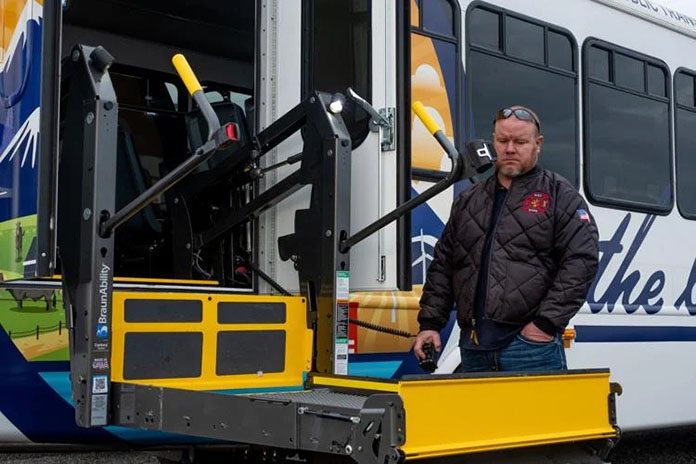
Starting in the new year, Morrow County residents have a new transit option.
The Loop, an on-demand transit service within the county, is expanding to include a free, fixed-route bus line between Heppner and Boardman as well as one within Boardman.
The county is “soft launching” the buses in January and will take the service’s first few months to finalize the most efficient and helpful stops and routes.
The public transit department is partnering with Kayak Public Transit, the free regional transportation bus system the Confederated Tribes of the Umatilla Indian Reservation operates, to better connect cities in Morrow County to others in the region, especially those with bigger populations, such as Hermiston or the Tri-Cities.
Irrigon is the one place in the Morrow County where Kayak reaches twice a day, but the partnership with The Loop service will mean those in and near Boardman will be able to access its services, too.
Transportation is limited
“There’s a huge underserved population that do not have vehicles or have one vehicle,” Morrow County Transit Manager Ben Tucker said, “then when someone takes it to work all day, that leaves everybody else without transportation.”
A recent study supports Tucker’s assessment of public transit in the county.
The Rural Engagement and Vitality Center and Euvalcree conducted the study, which the Oregon Department of Land Conservation and Development funded to help make rural transportation more accessible and inclusive. Around 300 people around the county responded to the survey. The REV Center is based at Eastern Oregon University and focused on connecting EOU with organizations in the region. Euvalcree is a Hermiston-based community organization focused on engaging underserved populations, especially Latino communities, in the region.
“Its goals were really to find out if those traditionally underserved populations knew about transit and had what they need to use transit,” Morrow County Planning Director Tamra Mabbott said.
The study’s results show there is a lack of awareness and a lack of use of current services. Respondents “expressed a strong desire” for more information about service options as well as their need for more consistent modes of transit. The new bus service meet that need, Tucker said.
“There’s not public transit that serves this area,” he said. “It fits into the local need as well as plays into the bigger picture of a transit network through the state.”
Challenges to success
However, he added, it is a challenge to build the transit route.
Rural areas don’t have as much of the infrastructure for buses that urban cities do. There is not always a sidewalk on the side of the road, so it’s not as easy to establish bus stops, for example, and there often is more distance between communities in the county that need the service.
Additionally, Tucker said, it’s hard to find bus drivers who live in the area or want to move nearby, and it’s difficult to know how weather conditions will affect the buses because the coverage area is so spread out.
For everyone involved, Tucker said, it’ll be a learning experience.
Getting information to people about the new service, as well as the other public transit options in the county, will be vital to the success of this project and was one of the major findings from the REV Center and Euvalcree study.
“We’re looking at a few options and are in a pretty early planning stage as to what those are going to be, the messaging,” Tucker said. “We’ll do direct messaging, go to employers, work with the chamber (of commerce), and the hope is just seeing the bus will provoke people to curiosity.”
Much of the messaging will be offered in Spanish as well as English, Mabbott said, because there is a significant population of people in the area who prefer communicating in Spanish.
The study also emphasized the importance of engaging a broad swath of the public.
“When we are looking for public involvement, we need to do more than we have historically done,” Mabbott said. “We may need to work with some other groups to get more public involvement.”
Ready for riders
The buses themselves look like transit buses rather than typical city buses found in large metro areas. The bus following Highwy 74, between Heppner and Boardman, can seat 32, plus up to two wheelchair users, and carry three bikes on the front. The bus driving within Boardman also can seat two wheelchair users, though it’s smaller, with 16 seats and the capacity for two bikes.
There are two more 16-seater buses that won’t start in use. One will serve as a backup, and, if the county can hire more drivers, the other will expand the bus line as a second bus on the route, which would lower wait times.
On the side of the buses is a logo designed specifically for The Loop. There are mountains, wheat fields, cows, wind turbines and industrial buildings, reflecting various features and industries in the county.
“It represents both ends of what the county has to offer,” Tucker said, “both north and south.”









